Godzilla King of the Monsters Review Trailer Music
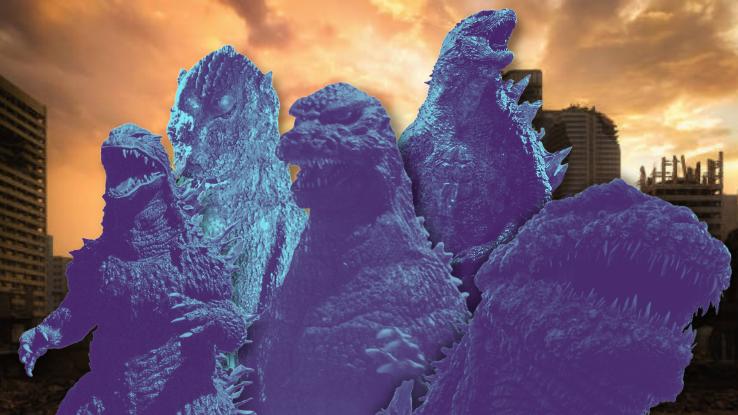
There's only one Male monarch of the Monsters, and his name isn't Kong. Godzilla proved that when he trounced that supersized ape (ii times!) in Godzilla vs. Kong (2021). As you can tell, we're big fans of the Gray Gecko. And nosotros're not lone; millions of people around the globe have been fascinated with Godzilla since his blackness-and-white characteristic picture show debut in 1954.
The king'south done it all since then; he's appeared in dozens of movies, several Telly shows, numerous comic books, and a cavalcade of video games. Last but not least, he'due south the main attraction at the annual K-Fest convention. Today is Godzilla's 67th birthday; 67 years of smashing buildings, punching out other monsters and cementing his place every bit a pop culture icon. Nosotros're looking back at Godzilla'southward harrowing origins and celebrating his enduring legacy.
1954: Godzilla'south Get-go Cinematic Attack
Do you ever wonder who came up with the idea of Godzilla in the first place? A Japanese producer named Tomoyuki Tanaka created the brute for the Toho Visitor, Ltd. Merely monetary gain was far from Tanaka'due south only inspiration; Godzilla is a production of his fourth dimension… and he'due south a product of World War II.
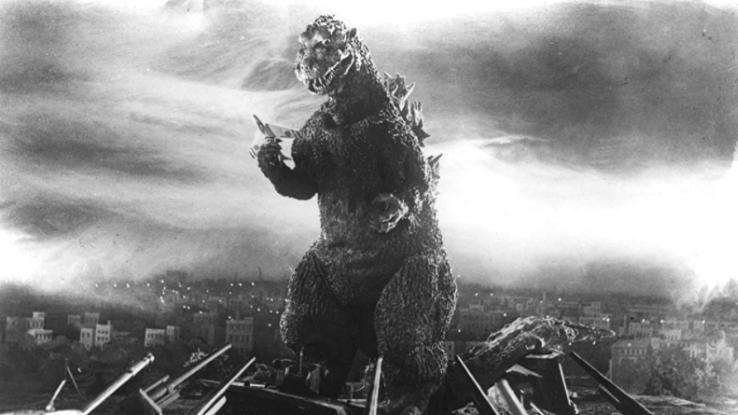
From its earliest days in the 1920s, America'south Universal Studios enjoyed massive success with a stream of now-archetype monster movies that lasted well into the 1950s. From features helmed past Frankenstein (or, yous know, Frankenstein'southward Monster) and Dracula to the Creature from the Black Lagoon, audiences couldn't get enough of things that went bump in the night. And, of form, King Kong had also been another heavy-hitter since his debut in 1933.
Monsters were big, figuratively and literally, so it simply fabricated sense for Tanaka to develop a monster film for Toho. Tragedy struck Nihon in August 1945, when the United States deployed two atomic bombs on Hiroshima and Nagasaki. These incidents compelled Tanaka to create a creature that embodied the destructive force of the atom bomb — one that could level cities in the blink of an center and reduce hapless citizens to ashes.
Moreover, during another incident in 1954, a Japanese fishing boat,Lucky Dragon Number five, met with disaster when it was exposed to a nuclear test that killed one crew fellow member and sickened the rest. At the time, the fear of nuclear destruction was alive and well in the earth — and, mayhap, nowhere was this anxiety felt as strongly as in Japan.
Enter Godzilla; a titanic terror covered head to toe in keloid scars and powered by radiation. From his conception, Godzilla symbolized the horrors of war and the hurting, fear, and desperation that Japanese citizens experienced during Globe War 2.
Godzilla made his premiere when his cocky-titled feature film debuted in Japan on November 3, 1954. While the film was met with mixed reviews from critics, information technology enjoyed a friendlier reception from audiences, grossing ¥183 million ($1.6 one thousand thousand) during its initial run.
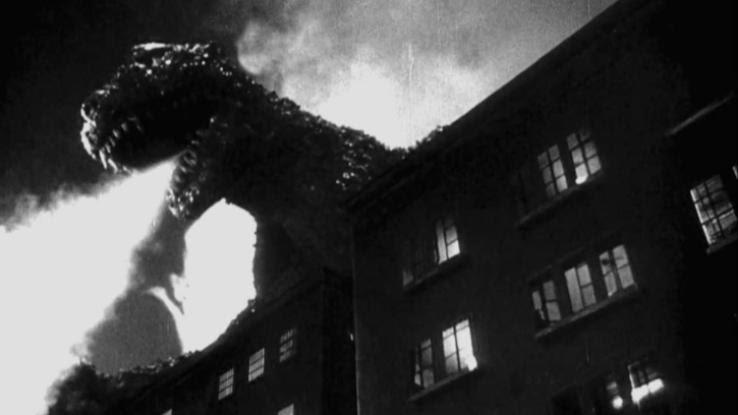
Merely why would Japanese audiences embrace a creature designed to symbolize the horrors of their nation'southward by? In essence, for the same reasons Americans were enjoying their own blend of monster movies. People have e'er been drawn to tragedies that unfold onstage. In fact, Aristotle even theorized that stories are capable of purging negative emotions like pity and fearfulness from audiences.
While the original black-and-white characteristic lacks mod VFX, it was an phenomenal technical feat at the fourth dimension. This is especially true considering that special effects director Eiji Tsuburaya wasn't able to utilise the same stop-motion animation techniques pioneered by American movies similar King Kong. At the fourth dimension, Japan simply didn't accept enough people who were experienced in the technique to pull off a full-length feature film in a reasonable amount of fourth dimension.
Later on realizing that stop-motion animation could take upwardly to vii years to implement due to his limited resources, Tsuburaya ended upward pioneering "suitmation". For those who don't know, suitmation involves an actor dressing upwards in a suit and acting like the monster — which is, in some ways, a forerunner to motion-capture performances. The result was a success in its time;Godzillawent on to spawn a new genre of Japanese monster movies known as Kaiju cinema.
Godzilla Arrives in the United States
Toho Studios was quick to follow up on the initial success of the kickoff Godzilla with 1955'southward Godzilla Raids Again. When the studio realized they had quite a success on their hands, Toho eventually released a heavily "Americanized" version of the film called Godzilla, King of the Monsters!, in 1956.
While Godzilla'southward popularity grew to lucifer his larger-than-life status in the United States, the monster largely remained a Japanese import for decades. In fact, it wasn't until 1998 that the showtime American Godzilla movie was released by Tristar Pictures.
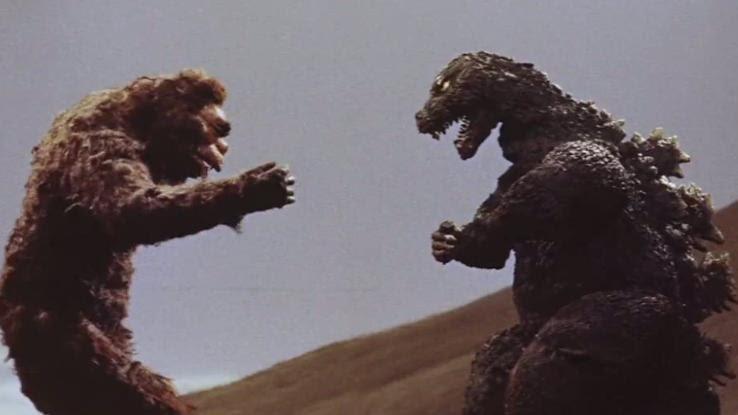
Whereas the first Godzilla was a clear horror pic, complete with radiation poisoning and families mourning the loss of loved ones, Godzilla Raids Once more introduced a new concept. While however a terrifying prospect in his own right, Godzilla likewise met a foe of his own size in the follow-up movie. In some means, this situated Godzilla as a protector of sorts — taking aim at another subversive creature instead of a densely populated city.
Godzilla Raids Again marks the commencement advent of Anguirus, another giant monster who would eventually develop a friendly relationship with the Big K. New allies and dangerous enemies would become recurring elements in Godzilla'south after movies. Over the years, Godzilla would boxing sentient chemical waste product, supersized plants, a whole host of cybernetic beasts, and of course King Kong.
The Americanization of Godzilla
When American studios tried releasing a Godzilla motion-picture show in 1998, the end upshot left a great bargain to exist desired. Largely considered a box office flop, the U.S. version of Godzilla presented a beast who, although initially awakened by a nuclear boom, largely abased the atomic symbolism that had hit domicile with earlier audiences.
Instead, the new, AmericanizedGodzilla was a CGI monstrosity that spent well-nigh of its time hiding from the military. Gone was whatsoever semblance of global nuclear feet (or deeper significant of any kind). In 2014, Legendary Pictures decided to give Godzilla another shot with the release of a brand new feature film.
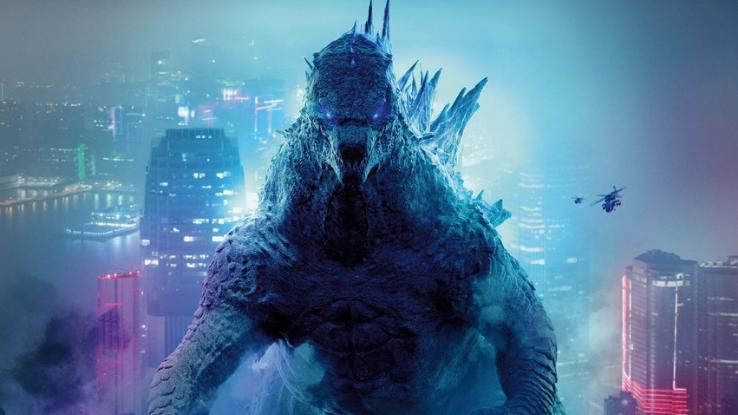
The 2014 version went back to the monster'south radioactive roots, only also put some timely new metaphors into play. As director Gareth Edwards explained, "In our moving picture, Godzilla represents a strength of nature. The theme of man vs. nature creeps up a lot visually throughout the flick."
The film was a blockbuster that spawned two direct sequels — Godzilla: King of the Monsters (2019) and Godzilla vs. Kong (2021) — and kicked off the Legendary Pictures MonsterVerse. Godzilla is less of a clear-cutting symbol of destruction in these films. Instead, he's presented as a mythical creature that restores balance to an ecosystem that humans take ravaged.
While doubtlessly yet terrifying, Godzilla, who himself has been viewed as both a destroyer and protector at diverse times in his career, continues to serve as a reminder that abusing everything from the environment to nuclear power can accept devastating consequences. Information technology's possibly an unexpected legacy, but, without a doubtfulness, one that endures.
Source: https://www.ask.com/entertainment/history-of-godzilla?utm_content=params%3Ao%3D740004%26ad%3DdirN%26qo%3DserpIndex
0 Response to "Godzilla King of the Monsters Review Trailer Music"
Publicar un comentario